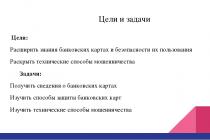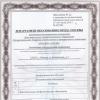An economic system is a form of organization of the economic life of society.
Elements of the economic system:
Socio-economic relations. They are based on the forms of ownership of economic resources that have developed in each economic system.
Organizational forms of economic activity (subsistence farming, commercial farming, etc.).
An economic mechanism is a way of regulating economic activity at the macroeconomic level, as well as a system of incentives and motivations that guide participants in economic life.
Specific economic ties between enterprises and organizations.
In any economic system, economics solves 3 main issues:
What to produce?(That is, what goods and services, in what quantities, by when).
How to produce?(What resources to use, at what enterprises, with the help, what technology, etc.).
For whom to produce?(That is, the target group of consumers).
Question 4. Main types of economic systems and their characteristic features.
Economic systems differ in:
A method for solving major economic issues.
By type of ownership of the most important types of resources.
From the point of view of these criteria, the following types of economic systems are distinguished:
Traditional system.
These economic systems existed mainly in the initial periods of human history. Major economic issues were decided on the basis of instinct. Now these systems are much less common (in the most remote areas of the world, in economically underdeveloped countries).
Traditions, customs, heredity, class, rituals determine what, how and for whom to produce. Consequently, this economic system is based on backward technology and widespread manual labor. Small-scale production is of great importance. It is based on private ownership of productive resources and the personal labor of their owner. Small-scale production is represented by numerous peasant and craft farms that dominate the economy. The role of the state is active - providing social support to the poorest segments of the population. The natural communal form of farming predominates.
Administrative command system.
In this system the main role is played by the state. It is it that decides the questions of what, how and for whom to produce with the help of centralized planning and management.
Character traits:
Public ownership of all economic resources, monopolization of the economy.
Coordination of economic activities is carried out on the basis of hierarchy, that is, the administrative method of subordination to a higher authority.
Management of the economy is carried out from a single center using orders and direct commands.
The center gives instructions: what, how and for whom to produce, where to deliver products, in what quantity, at what price. Consequently, the center must know and determine in advance all needs, all resources. On this basis, a directive plan for economic development for a certain period of time is drawn up. Each employee is given specific tasks, and their implementation is strictly controlled.
Giant monopolies do not care about introducing new equipment and technology.
A significant portion of resources is allocated to the development of the military-industrial complex.
Examples of countries: USSR, countries of Eastern Europe.
Practice has shown that such a system can be effective in extreme conditions, in emergency circumstances (war). However, in the long term, in a normal socio-political and economic environment, it cannot be effective. Consequences: loss of moral and material incentives to work, loss of a person’s sense of ownership, equalization of pay, and, consequently, a decline in production. The economy becomes inefficient.
Market system.
The market is a mechanism for interaction between sellers and producers, a balance of supply and demand.
Question “what to produce?” The consumer decides.
Question “how to produce?” decided by the manufacturer. Under pressure from competition, manufacturers are trying to innovate so as not to go bankrupt, in order to reduce their costs.
Question “For whom to produce?”- in a market system, for those who have money.
Thus, in a market system, the main means of coordinating economic activity is commodity-money relations and competition. Private property is predominant. This is a very tough system. You have to pay for mistakes in rubles, since miscalculations lead to losses, ruin, and bankruptcies. This system is based on the principle of economic feasibility, that is, on the desire to achieve maximum results at minimum costs. In a competitive environment, every entrepreneur tries to produce a better quality product, which means he strives to introduce new equipment and technologies. All this contributes to scientific and technological progress.
However, this is not a perfect system and has many shortcomings. As a result of competition, some are ruined and others are enriched, therefore, the property stratification of society is growing. Social guarantees are minimal, since the state plays a small role, being only an arbiter who monitors the implementation of laws. Thus, high efficiency is combined with a violation of the principles of equality and social justice.
Mixed system.
It should be borne in mind that in real life there is no market economy in its pure form. It exists only in theory. In real life, the modern economic systems of most developed countries are mixed.
The main feature of a mixed economy: both the state and the private sector play an important role in answering the questions: What? How? For whom to produce?
Planning methods are becoming quite widespread in it: development plans for individual firms based on marketing research, specific government intervention. Plans at different economic levels influence the structure and quantity of products produced, ensuring their greater compliance with social needs.
The problem of using resources is solved within large companies also on the basis of an analysis of promising industries.
Thus, the state in a mixed economy acts in many directions (including financing of new, low-profit industries, retraining of personnel, development of medicine, social protection), exerting an influence on the economy, which increases sharply during periods of crisis.
However, the market mechanism continues to play the main role in answering the classic three questions.
Models of economic organization:
American model is a liberal market-capitalist model, which assumes the priority role of private property, a market-competitive mechanism, as well as a high level of social differentiation.
German model– a model of a social market economy, which links the expansion of competitive principles with the creation of a special social infrastructure that mitigates the shortcomings of the market and capital.
Swedish model is a social model characterized by a high level of social guarantees based on broad redistribution of income.
Japanese model– a model of regulated corporate capitalism, in which favorable opportunities for capital accumulation are combined with the active role of state regulation in the areas of programming economic development, investment and foreign economic policy and with the special social significance of the intra-company principle.
The basic problem of economics can also be presented as a problem of choice. Indeed, if each factor used to satisfy various needs is limited, then there is always the problem of alternative use and search for the best combination of factors of production, that is, the problem of choice. A reflection of this problem is the statement three main questions economy.
Three main questions of economics:
What? – problem of targeting.
– Which of the possible goods and services should be produced in a given economic space and at a given time? – How? production problem.
– With what combination of production resources, using what technology, should the selected goods and services be produced? – For whom? distribution problem.
– Who will buy the selected goods and pay for them, benefiting from them? How should society's gross income from the production of these goods and services be distributed? The fourth question, which also inevitably faces every society, is the question: How?
How to get rid of waste generated in the process of life, how to maintain the ecological balance in nature without reducing the level of consumption. This
The production capabilities of the economic system are limited by the scarcity of the resources used. Moreover, the limitation of all economic resources remains and even increases as society develops. This is due not only to the depletion of irreplaceable natural resources, but also to the fact that consumption constantly gives impetus to the development of production, that is, new goods and services are created, their quality characteristics change, which causes an increase in the need for consumer and investment goods. And each time society is forced to decide which of these goods to produce with available resources and on what scale.
The problem of choice in any economic system (be it a family, a company, a state) can be illustrated using economic model “Production Possibility Frontier”. And also, this model allows you to clearly demonstrate such fundamental economic concepts as limited resources, opportunity costs.
To build the model, we will plot the number of consumer goods (X) on the x-axis, and the number of means of production (Y) on the ordinate axis (see figure).
Means of production (Y)
Consumables (X)
O X B X C
The ABCD curve, called production possibilities frontier, characterizes the maximum possible volumes of production of means of production and consumer goods with full use of all available resources. Each point on this curve represents a certain combination of goods of these two types (for example, point B represents a combination of X B units of consumer goods and Y B units of capital goods.
The production possibilities frontier graph illustrates the fact that an economy that is fully utilizing productive resources cannot increase the production of any good without sacrificing another good. The functioning of an economy at the frontier of its production possibilities indicates its efficiency.
Based on this, the choice of the combination corresponding to point F is regarded as unsuccessful for a given society, since it does not allow it to effectively use production resources. Having chosen such a point, we would resign ourselves either to the presence of unused resources (for example, unemployment) or to the low efficiency of their use (for example, large losses, including working time). Production based on the choice of point E is generally unfeasible, since this point lies beyond the production capabilities of a given economic system.
Let's compare points B and C. By choosing point B, we will prefer to produce fewer consumer goods (X B) and more means of production (Y B) than by choosing point C (X C, Y C). More precisely, when moving from point B to point C, we will additionally receive Δ X = OX C – OX B units of consumer goods, sacrificing for this ΔY = OY B – OY C units of means of production. The amount of one good that must be sacrificed to increase the production of another good by one unit is called opportunity costs or costs of lost opportunities.
The ABCD curve is convex. This is due to the fact that one resource can be used more productively in the production of consumer goods, while others can be used as means of production.
If new technology, new technological processes are introduced simultaneously and evenly in all industries, then the production possibilities frontier AD will move to the position of the dotted line A 1 D 1, the possibilities of producing both means of production and consumer goods with the same resources will increase approximately equally ( see fig.).
If innovations are carried out primarily in industries producing capital goods, the increase in the area of production possibilities will be skewed to the right (see figure).
“What?”, “How?”, “For whom?”
In order to solve the main problem of the economy - the distribution of rare resources, each economic system answers the following three questions in its own way (Fig. 3.2).
Rice. 3.2. Basic issues of the economic system
A traditional economy is based on traditions passed down from generation to generation. These traditions determine what goods and services are produced, for whom, and how. The list of goods, production technology and distribution are based on the customs of a given country. The economic roles of members of society are determined by heredity and caste. This type of economy persists today in some so-called underdeveloped countries, where technological progress penetrates with great difficulty, since it, as a rule, undermines the customs and traditions established in these systems.
A market economy is characterized by private ownership of resources and the use of a system of markets and prices to coordinate and manage economic activity. What, how and for whom to produce is determined by the market, prices, profits and losses of business entities.
The manufacturer strives to produce (“what”) those products that satisfy the needs of the buyer and bring him the greatest profit. The consumer himself decides which product to buy and how much money to pay for it.
Since in conditions of free competition the setting of prices does not depend on the manufacturer, then the question “how?” The business executive responds with the desire to produce products at lower costs than his competitor in order to sell more and at a lower price. The technology and organization of production, the use of technical progress, and various management methods are aimed at solving this problem.
The question “for whom?” decided in favor of consumers with the highest income.
In such an economic system, the government does not interfere in the economy. Its role is reduced to protecting private property and establishing laws that facilitate the functioning of free markets.
A command or centralized economy is the opposite of a market economy. It is based on state ownership of all material resources. Hence, all economic decisions are made by government agencies through centralized (directive) planning. Each enterprise's production plan stipulates what to produce and in what volume; certain resources, equipment, labor, materials, etc. are allocated, which determines the solution to the question of how to produce

A mixed economy involves the use of the regulatory role of the state and the economic freedom of producers. Entrepreneurs and workers move from industry to industry by their own decision, and not by government directives. The state carries out antimonopoly, social, fiscal (tax) and other types of economic policies, which to one degree or another contribute to the economic growth of the country and improve the living standards of the population.
The modern world is characterized by a wide variety of mixed models. For example, the Swedish system is known, in which social policy is at the core. The Japanese economic model is characterized by developed indicative (recommendatory) planning and coordination of government and private sector activities.
In the American economy, the state plays an important role in establishing the rules of economic activity, regulating business, and developing education and science. But most decisions are made based on the market situation and pricing on it.
The modern world is characterized by the presence of a variety of economic systems, for the classification of which different criteria are used. Today the most famous are the formational and civilizational approaches.
The formational approach made it possible to identify the logical stages in the historical development of society and to identify five methods of material production (primitive communal, slaveholding, feudal, capitalist and communist) based on the assertion that the decisive role belongs to the direct production process, or mode of production.
It is interesting to note that K. Marx, in a letter to Vera Zasulich, identified only three large formations:
1) primary (archaic), where he included primitive communal and Asian methods of production;
2) secondary, based on private property (slavery, serfdom, capitalism);
3) communist. According to Marx, communism is not an “ideal mode of production,” as many imagined, but a historical era that includes a number of modes of production, the main content of which is the abolition of private property. The communist ideal, according to Marx, “The free development of everyone is the condition for the free development of all,” came to life only after the end of the era of communism in the new era of “positive humanism.” According to the ideas of K. Marx, F. Engels, and then V.I. Lenin, communism consists of two phases, the lowest of which is socialism.
In connection with the events taking place in our country and the countries of Eastern Europe, questions arose: is the teaching of Marxism about the socialist transformation of society correct and is the communist idea itself a utopia? Today everyone answers these questions differently. Some believe that, in fact, there was no socialism in the former socialist countries; rather, there was socialism in Western developed countries, which is why they talk, for example, about the model of “Swedish socialism.” Others argue that there was socialism, there was a world socialist system, but the socialist economic system was significantly deformed. Currently, in world practice, journalism and economic literature, one can increasingly come across the term “post-communist” or “post-socialist” countries, which indicates recognition of the existence of socialism in these countries until the recent past.
Today, the classic distinction of five modes of production is questionable for a number of reasons, including because it applies only to Western Europe and does not have universal significance. The Asian mode of production, the civilization of China and India do not fit into this; with a stretch, Russia can also be included here. Therefore, consideration of the processes of world development at the level of formation, the method of material production, with all its theoretical and historical significance, cannot cover the entire complex range of events occurring in the world. Certain limitations of this approach are obvious. Therefore, in the economic literature, attempts are being made to use other criteria to analyze the phenomena and processes of social life.
The theory of the cyclical development of society and the change of civilization is of undoubted interest in explaining various forms of economic systems.
According to this theory, seven civilizations are distinguished: Neolithic, which lasted 30-35 centuries, and in Russia 20-30 centuries; eastern slaveholding (Bronze Age) - with a duration of 20-23 centuries in the world, in Russia - 15-16; antique (Iron Age) - 12-13 centuries in the world and 11-12 centuries in Russia; early feudal - 7 and 7 centuries, respectively; pre-industrial - 4.5 and 2.5 centuries; industrial - 2.3 and 1.5 centuries; post-industrial - 1.3 and 1.4. The change of civilizations can be represented graphically (Fig. 3.3).

Rice. 3.3. Change of civilizations in the world
This theory allows us to take a fresh look at the processes taking place today in the world in general and in Russia in particular. It allows us to draw the following conclusions.
1. Since the market took place in all civilizations (although its role was different), the essence of the modern transition period comes down not to the transition to a market (it is impossible to move from market to market), but to the replacement of one civilization by another. The statement about the modern transition of Russia to the market indicates that we are captive of primitive stereotypes, cliches, according to which it was believed that socialism (including that built in Russia) is incompatible with the market, the plan and the market are antipodes, etc.
2. The duration of the transition economy, if it is understood as the stage of crisis and displacement of the outgoing civilization and the birth of a new civilization, according to the calculations of Leningrad economists V.I. Kuzmina and A.V. Zhirmunsky, is 1/4 of the total duration of the cycle, therefore, Russia will enter the new civilization approximately in 2010.
3. Due to the fact that Russia entered one civilization or another later, but passed through them much faster, we can assume that the peoples of Russia perceive progress faster than is commonly thought. It is wrong to represent the peoples of Russia as lazy, worthless and inert people. The evolution of civilizations shows the opposite.
In the economic literature, views on the development trends of economic (economic) systems are different. Some believe that the defining trend in the development of systems is the tendency towards uniformity, the unification of all structural elements. Thus, E. Preobrazhensky wrote that various economic systems can exist within the national economy on the basis of complete economic equilibrium between them, but such equilibrium cannot exist for a long time, because one system must devour another.
Other economists believe that the coexistence of different economic systems mutually enriches these systems, and this leads to economic growth and the emergence of a qualitatively new economic system. Thus, N. Bukharin found the deepest meaning of the NEP in the fact that for the first time the possibility of mutual fertilization of different economic forces was discovered, on the basis of which growth was ensured. The modern theory of convergence is based on the thesis that different economic systems, in the process of their own development and improvement, will ultimately merge and create a new economic system.
Such inconsistency of views reflects the inconsistency of the development of economic systems, when one trend comes to replace another. The modern development of many countries confirms this theoretical conclusion: general nationalization is being replaced by denationalization; universal planning - by abandoning it; centralization - decentralization, etc. The stronger the fluctuations, the greater the difficulties in the development of the country's economy.
Representatives of institutionalism are interested in two main problems: economic power and control over the economy, and therefore they use the concept of “institutions”.
Economic institutions usually refer to the rules of the game in society, or more formally, the human-created constraints that shape how people interact.
Institutions create a structure of incentives for exchange, social, political or economic. Institutions are both formal laws (constitutions, legislation, property rights) and informal rules (traditions, customs, codes of conduct). Institutions were created by people to ensure order and eliminate uncertainty in exchange. Such institutions, together with standard restrictions adopted in economics, determined a set of alternatives and thus determined the costs of production and circulation and, accordingly, profitability and the likelihood of engaging in economic activity. Jack Knight believes that institutions are a set of rules that structure social relationships in a special way, the knowledge of which should be possessed by all members of a given community.
Formal institutions are often created to serve the interests of those who control institutional change in a market economy. The pursuit of self-interest for some may have a negative effect on others.
Social institutions that fulfill ideological and spiritual needs often influence social organizations and economic behavior. Attempts by the state to manipulate social institutions, for example, norms, for its own purposes have often been unsuccessful. An example is the education of Soviet people in the spirit of the moral code of the builder of communism.
Institutions can be thought of as social capital, which can change through depreciation and new investment. Formal laws can change quickly, but coercion and informal rules change slowly. And here Russia can serve as an example, adapting suitable economic institutions of capitalism for the market model. Informal rules, norms, and customs are not created by the authorities; they often develop spontaneously.
Institutions slowly adapt to changes in the environment, so institutions that were effective become ineffective and remain so for a long time, since it is difficult to turn society away from the historical path established a long time ago.
There is a difference between institutions and organizations. While institutions are a set of rules and laws that govern the interactions and actions of individuals, organizations are corporate actors who themselves may be subject to institutional constraints. Organizations have an internal structure, an institutional framework that determines the interaction of the individuals that make up the organization. Some collective entities may thus be both institutions and organizations, such as a firm, a government bureaucracy, a church, or an educational institution.
To understand the relationship between institutions and production efficiency, the concept of transaction costs is essential. The term transaction costs was introduced into scientific circulation by Nobel Prize laureate R. Coase (b. 1910). These costs are not associated with production as such, but with the costs associated with it: searching for information on prices, counterparties to business transactions, costs of concluding business contracts, monitoring their implementation, etc.
Modern Western societies have already developed systems of contract law, mutual obligations, guarantees, trademarks, complex monitoring systems and effective mechanisms for enforcing laws. As a result, servicing transactions consumes enormous resources (although these costs are small per transaction), but the productivity associated with gains from trade increases even more, thanks to which Western societies have been able to grow and develop rapidly.
Increasing specialization and division of labor necessitate the development of institutional structures that enable people to undertake actions built on complex relationships with other people - complex both in terms of individual knowledge and in terms of temporal extent. The development of a complex network of social relationships would would not be possible without such institutional structures reducing the uncertainty associated with such situations. Institutional reliability is of fundamental importance because it means that, despite the ever-expanding network of interdependence due to increased specialization, we can be confident in the results that are inevitably becoming ever greater. more and more removed from the circle of our individual knowledge.
High transaction costs are very often associated with weak institutions (weak social enforcement of laws), but high transaction costs can also be associated with strong institutions that leave few rights to agents. The main goal when choosing institutions is to minimize transaction costs. Voluntary exchange will be based on greater trust if the government minimizes transaction costs by creating and clarifying property rights.
The effectiveness of coordination methods must be considered not from the point of view of normative assessments (bad or good), but from the point of view of saving transaction costs. Of course, this is not the only criterion, but it helps to understand why the attempt to build all social production according to the type of firm or “single factory,” as V.I. Lenin wrote, turned out to be untenable. Because regulation from the center (Gosplan) is accompanied by huge transaction costs due to the inability to concentrate all the information scattered in society about resources, consumer preferences, etc. in a single center.
1. A specially ordered system of connections between producers and consumers of material and intangible goods and services constitutes an economic system. At the same time, the economic system is a set of mechanisms and institutions for making and implementing decisions in economic activity.
2. The most important elements of the economic system are economic activity, productive forces, industrial relations, economic resources, production capabilities, results and efficiency.
3. Due to limited economic resources, the most important problem of the economic system is the problem of choice. The essence of this problem is that if each economic resource used to satisfy diverse needs is limited, then there is always the problem of alternative use and search for the best combination of rare resources. What we give up is called the opportunity cost of the expressed outcome.
4. The production capabilities of the economic system, limited by the scarcity of the resources used, do not, as society develops,
IOiibKU are not saved, but they can increase. The production possibilities of an economic system are characterized by a production possibilities curve.
5. Economic efficiency is the ratio of results and costs and economic activity. The result is an economic product, and the costs are the expended economic resources. Economic efficiency is characterized by a Pareto optimum - this is a state in which no one can improve their condition without worsening the position of at least one of the market participants.
More lessons for the Unified State Exam on the YouTube channel
Lecture:
Main economic issues
Economic science, guided by the principle of rational use of limited resources to satisfy the unlimited needs of people, seeks answers to the questions: what, how and for whom to produce?
What to produce? This means deciding what, in what quantity and of what quality economic goods (goods and services) need to be created.
How to produce? This means deciding what resources and technologies will be used in the production of certain economic goods.
For whom to produce? This means determining for which categories of people (market segment) the goods produced will be intended, for example, toys for children, cosmetics for women.
Economic system is a set of principles and rules of economic relations that arise in the process of production, distribution, exchange and consumption of goods.
Scientists distinguish traditional, planned (command), market and mixed economic systems. Let's consider their characteristic features.
Traditional economic system
The oldest type is the traditional economic system. It is characteristic of primitive society, but also exists in modern countries of South America, Asia and Africa, where resources are very limited.
Signs:
- resolving issues of what, how and for whom to produce is based on traditions (continuity);
- the basis of the economy is agriculture;
- communal form of ownership;
- universal manual labor and primitive production technologies that hinder the growth of labor productivity;
- subsistence farming, production aimed at satisfying one’s own needs and not for sale;
- low trade turnover, correspondingly low level of commodity-money relations;
- closed society, the existence of caste or class divisions that do not allow people to move from one social group to another, as a result of which socio-economic progress is hampered.
The traditional economic system has its advantages and disadvantages. The advantages are continuity, ease of organization of production, and minor environmental pollution. The disadvantages are low incomes, shortages of consumer goods, and limited economic growth.
Planned economic system
A planned (command) economic system is one of the signs of a totalitarian political regime. This type dominated during the Soviet era, but also functions in modern states, for example, North Korea and Cuba.
Signs:
- the decision of the main economic issues belongs to a centralized state body, which carries out directive planning of production;
- the basis of the economy is agriculture and foreign trade;
- the means of production are owned by the state, and only property intended for running a household can be privately owned;
- the emergence of a social division of labor;
- administrative regulation of prices;
- market monopolization.
Market economic system
A market economy presupposes freedom of entrepreneurial activity, which is guaranteed by the state. The basis of the relationship between producers and consumers is individual interest and personal benefit.
Signs:
- the decision on what, how and for whom to produce belongs to the owner, producer, consumer;
- the basis of the economy is the service sector;
- a variety of forms of ownership is recognized, but private ownership predominates;
- deepening the social division of labor;
- trade relations are developing widely;
- pricing is free and regulated by market laws;
- competition;
- Scientific and technological progress achievements are being widely introduced into production.
The main advantage of a market economy is competition, which is necessary for producers to strive to create quality products and for consumers to have a wide choice of a particular product or service (assortment). Another advantage is the interest of producers in using resources efficiently and meeting the maximum needs of people at minimum costs. This system also has disadvantages. This is income inequality, a significant social gap between the poor and the rich, unemployment, and periodic economic crises. The problem of negative external (side) effects is acute. For example, the operation of a pulp and paper mill causes water pollution (release of waste into water); Increased use of cars by people leads to air pollution. The state is forced to intervene in solving such problems, eliminating market imperfections.
Mixed economic system
This type of economic system combines the features of command and market systems with the predominance of the latter. Therefore, one of the important features of a mixed economy is multi-sector, when the role of both the state and private individuals is significant in production. But this system may also contain features of a traditional economy. For example, perfume production in France is traditional. The role of the state in a mixed economy is great and consists in:
- preventing a monopoly on the production of economic goods (with the exception of strategically important goods, for example, military equipment and weapons, space equipment);
- preventing shortages of goods and services;
- price stabilization;
- ensuring employment of the able-bodied population and providing assistance to disabled citizens (for example, disabled people, pensioners);
- the production of public goods (for example, health care and education);
- protection from unscrupulous market participants;
- in the fight against negative externalities of production.
In this lesson we will find out what the main questions are in economics, why it exists, and how it tries to answer these main questions. We will also talk about cost efficiency and economic choice. We will try to show how economics enters the life of every person.
Topic: Economics
Lesson: Basic Economic Issues
In the last lesson, we talked about the fact that resources are very limited, and economics, in essence, is designed to solve the question of how to use these resources with maximum benefit for humanity. All participants in economic processes are in one way or another in a state of choice: they choose which resource to use now and which to use later, which goods to produce, etc. Accordingly, in the economy there arise three main questions to which she must respond: “what to produce?”, “how to produce?” And “For whom to produce?”. The answer to these three questions is the answer to the main task of economic processes. Let's talk about each of them separately.
Rice. 1. Basic issues of economics ()
So the first question is “What goods to produce?” It is clear that a person is a creature who, living in a social environment, largely serves himself. Primitive people, of course, served themselves independently. Thus, the primitive hunter made the items he needed for hunting: a spear, a bow and other things he needed. And in our time, each of us can do some things for ourselves on our own, or we can get these things in another way. They can give you something, something can be passed on to you by inheritance, and you can buy something on the market. Thus, you create your life the way you want it to be. You can become an absolutely satisfied person, all your needs and desires can be realized, but society, alas, cannot live like this due to the limited resources of our resources.
That is why all producers (they can be the state, private firms, even individuals) are in a situation of constant choice of which product they need to produce. It depends on what exactly will be in demand in the near future. Over time, the demand for certain goods changes. A century or two ago, some things were absolutely necessary, but now the need for them has disappeared; among other things, they have become archaic. An example of such a thing would be bast shoes.
Being in a situation of choice, manufacturers strive to obtain not only immediate benefits, but also to lay the foundations for their future production. They strive to increase their profits in the future by anticipating the needs of society that may arise.
Of course, it is very profitable for all manufacturers to produce those services or goods that cannot be refused. A person cannot refuse food or clothing. But the essence of the economy is the presence of competition, the confrontation between different producers, so that the consumer has the opportunity to choose whether to buy cheaper or buy more expensive. By the way, it should be explained why things are generally cheaper or more expensive. This happens because the manufacturer always decides how to produce goods.
Rice. 3. The essence of economics is competition between producers ()
So, we come to the second question - “how to produce goods and services?”. There are always a variety of ways and possibilities to produce the same product or service. The way it is manufactured and the decisions that manufacturers make during the production of the product depend on what the final product will be. One way or another, any manufacturer makes sure that its solutions are the most effective. And under economic efficiency understand the product of a given volume of finished product with the least expenditure of limited resources. Having understood this relationship, we can understand why a particular product has such a price. The manufacturer always strives to reduce the cost of its production, but at the same time does not want to reduce its profits. This is the basis of any production; the economics of production exists on this balance.
However, there is also a third question that we identified today - “for whom to produce goods and services?”. It is clear that we all have different desires, and we all have different opportunities. When producing any product, the manufacturer strives to please the interests of the broad masses of the population. But it is simply impossible to do this with the help of any one service or product. That is why each manufacturer strives to either highly specialize or produce a wide range of goods and services for different social strata. It does not matter whether it is a physical product or a service that does not have physical expression, because it also has a cost and brings profit to the manufacturer.
So, to obtain the correct answers to the main questions of economics, it is necessary to know the capabilities of the economic system, the state of the market, and the factors shaping supply and demand.
As we see, three main economic issues put human society in a state of choice. One way or another, we have to choose where to produce, how to produce, what to produce, for whom to produce. This question is painful every time, because for some time the production of some things and services may be profitable, but then it ceases to be so. It should be understood that almost every day manufacturers are in limbo, because it is very difficult to determine the exact priorities of a person. There is a possibility that our outlook on life will change and the need for some item or service will disappear. You can give a lot of examples in the history of mankind when some important and interesting things that a person used eventually came to nothing. Such is life, such is the economy.
Think about why the quality of manufactured goods is different. The same thing on the market can have completely different prices depending on its quality. Let's take pens as an example. This is an ordinary everyday item that is familiar to you. But even that can cost completely differently. You can buy a simple and inexpensive ballpoint pen that you will use every day, or you can buy a very expensive gift pen for special occasions. But, nevertheless, it is still the same pen, a writing instrument.
Rice. 4. Simple or gift - a pen is just a writing instrument ()
So where does this price difference come from? It's about human interests and desires. The manufacturer initially focuses on a specific buyer. People's tastes are varied: some have a greater craving for luxury and a desire to surround themselves with expensive items, while for other people it is enough to have simple and multifunctional items at hand. From the point of view of the manufacturer, it is a person with a craving for luxury, unusual things, who is a buyer who is willing to pay a large amount for the same product. The most expensive items and services are aimed at it. For example, a watch can be simple in design, or it can become a complex luxury item that has a lot of additional functions and indicates the high social status of its owner. The need for them is very conditional, but the owner of such a watch is proud that he has it.
Rice. 5. Expensive watches are more of a luxury than a necessity, but the owner is proud of owning them ()
We all surround ourselves with things and objects that we need. This is how we build our own lives. This is how economics enters the life of every person.
Bibliography
1. Kravchenko A.I. Social science 8. - M.: Russian word.
2. Nikitin A.F. Social studies 8. - M.: Bustard.
3. Bogolyubov L.N., Gorodetskaya N.I., Ivanova L.F. / Ed. Bogolyubova L.N., Ivanova L.F. Social science 8. - M.: Education.
3. Website for professional traders ().
Homework
1. Explain what economic efficiency is.
2. Describe three major economic issues.
3. * Imagine that you have been inherited the right to own a network of confectionery factories. Answer the main economic questions: what exactly will you produce, how and for whom.














